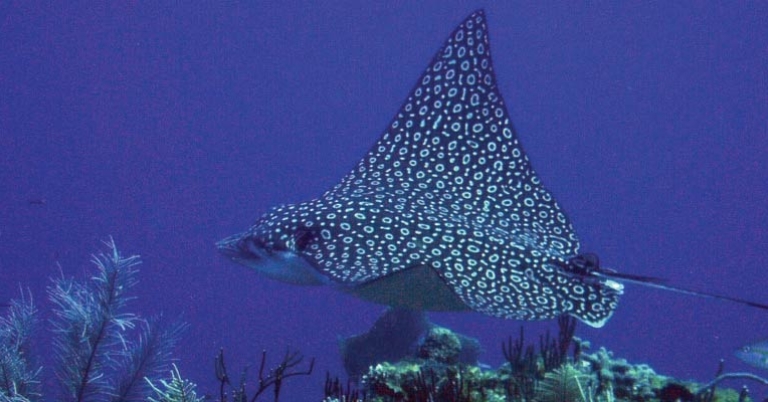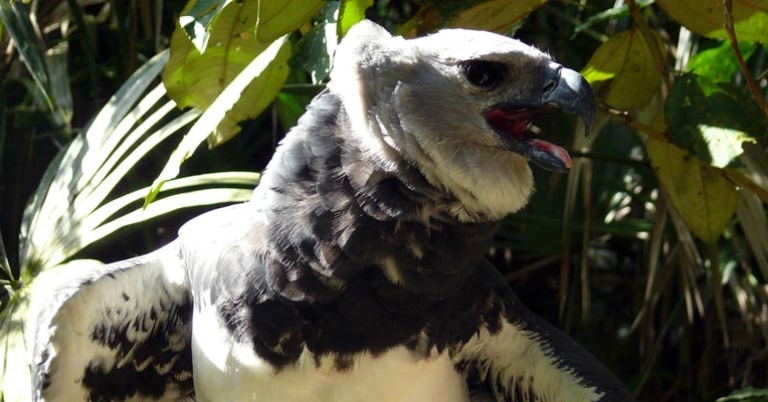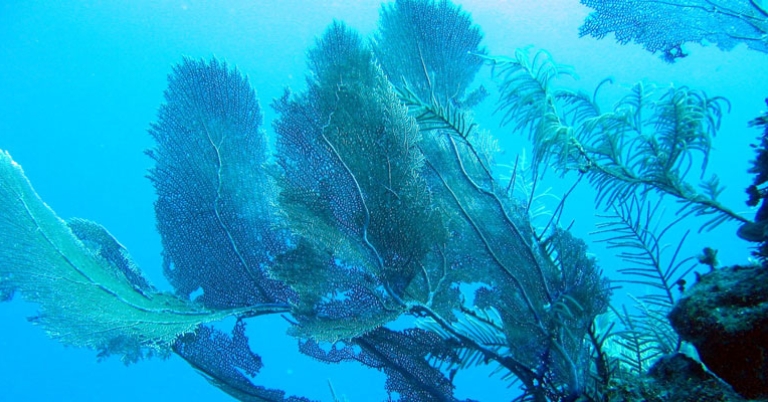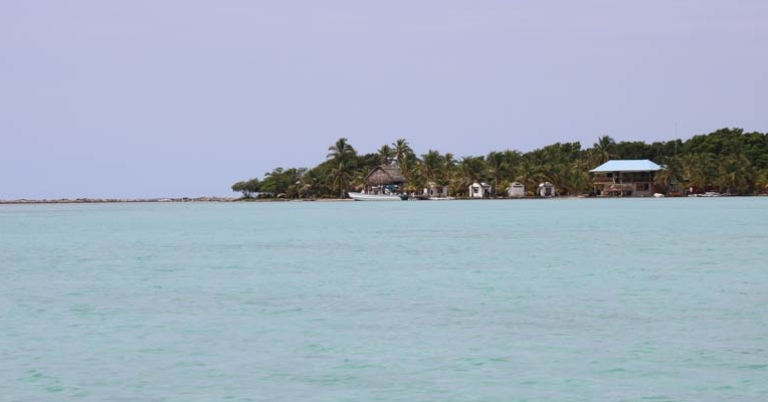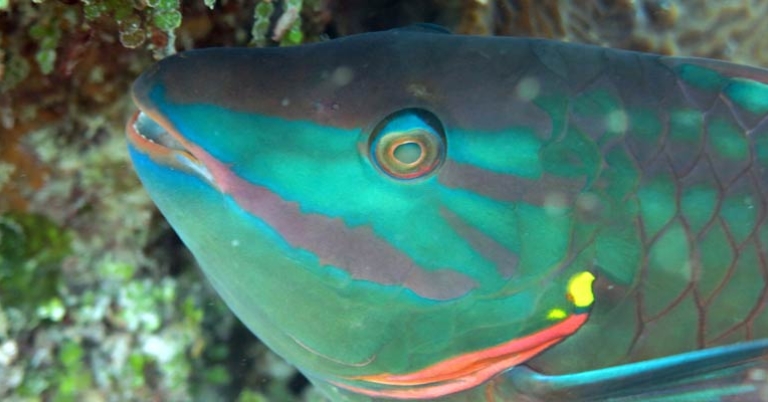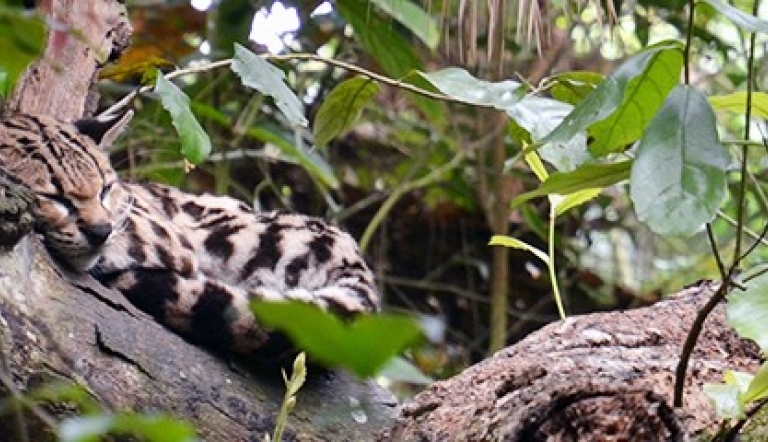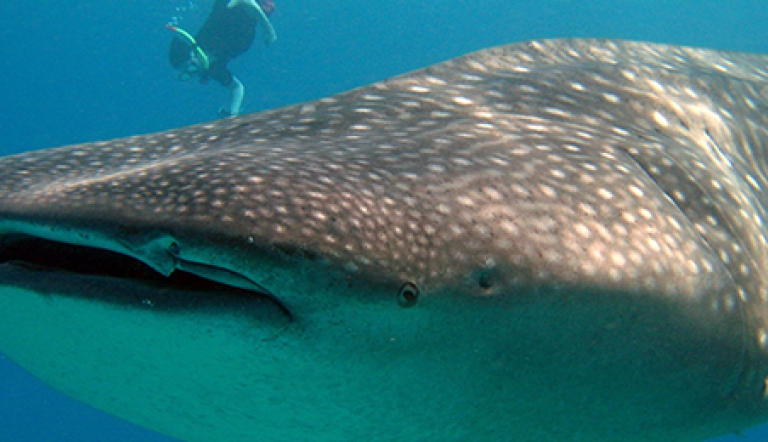Fayetteville High School Experiential Learning in Belize
About this trip
Belize is home to a variety of marine and terrestrial ecosystems, from rainforest and tropical savanna to mangroves, coral reefs, and more. Examine and compare the country’s different natural, unspoiled habitats during this 8-day learning adventure. Observe wildlife and hike in the foothills of the Maya Mountains, explore underground caves, and snorkel in the South Water Caye Marine Reserve for a firsthand look at marine biodiversity. As students learn more about the importance of Belize’s natural beauty and its conservation, they’ll also gain a deeper understanding of how these environments are connected and contribute to a series of service and research projects at the Belize Zoo and Tropical Education Center and on the Belize Barrier Reef, gaining a deeper understanding of how these environments are interconnected.
Highlights
- Receive an introduction to Belizean wildlife and the importance of its conservation.
- Work on a service project at the Belize Zoo.
- Explore the rainforests and unique geological features of St. Herman’s Blue Hole National Park.
- Learn about the connection between inland activities and coastal environments.
- Observe and identify a host of marine life while snorkeling the Belize Barrier Reef.
- Participate in a reef clean-up project, working along a transect and recording data on the trash that’s collected.
$3,054
Per Person
About this price
Land cost + air from Fayetteville, AR. Baggage fees may apply.
What makes us different
Rich content
Worry-free Planning & Travel
Safety & security
Scientific expeditions
Curriculum-based Content
Value for your money
Daily Itinerary
Print ItineraryWestern Highway
Western Highway
Western Highway
Western Highway
Tobacco Caye
Tobacco Caye
Tobacco Caye
Departure
Pricing
Print Pricing$3,054
Per Person
About this price
Land cost + air from Fayetteville, AR. Baggage fees may apply.
What's Included
- Activities and meals as mentioned in itinerary
- Airport transfers are provided on group basis (not individual flight basis)
- All tips
- Carbon Offset
- Dormitory accommodations with shared bathrooms
- Full time guide per region for the duration of your program
- Non alcoholic beverage with meals
- Private transportation and driver for the duration of the program
- Snorkel gear
- Travel protection, post departure coverage, excludes trip cancellation
What's Not Included
- International airfare
- Items of personal nature
- Trip cancellation coverage
Pricing Details
A $200 per person deposit and enrollment form is due to hold your space on this trip. The deposit is refundable less $100 cancellation fee until 95 days prior to departure. Cancellations after this date will result in loss of full deposit.
Cancellations after this date will result in loss of full deposit.
Holbrook Travel strongly recommends the purchase of travel protection for medical emergencies while traveling and to protect your investment. Please note the purchase of Cancel for Any Reason Coverage or to exclude pre-existing conditions with Trip Cancellation coverage may require policy purchase within 10-14 days of your initial deposit, depending upon the provider.
Final payment due date: March 15, 2023
Travel Info
Print Travel InfoEntry & Exit Requirements
American and Canadian citizens must have a valid passport to enter Belize. U.S. passports must be valid for the duration of your stay in Belize. It’s recommended to have at least six months’ validity from your date of departure, as entry requirements are subject to change without notice. Canadian passports must be valid for at least six months beyond the date of expected departure from Belize.
A visa is not required for visits up to 30 days.
If you are traveling with minors, you may be asked to show U.S. birth certificates for each child. You may also be required to present documentation that the minor is traveling with the permission of any non-traveling parents/guardians, such as with a notarized letter of consent, custody decree, adoption papers, or death certificates.
If you are not traveling with a U.S. passport, please check with the Belizean Embassy for the requirements based on your nationality.
When leaving Belize by air, there is a departure tax of USD $55.50, which is usually included in the cost of your airfare. Consult with your airline to determine whether the departure tax is included in your ticket cost. If the departure tax is not included in your ticket cost, it should be paid at the airport prior to check-in, payable in cash only (U.S. currency). Please note exit taxes are subject to change without prior notice.
Health Information
IMMUNIZATIONS
The Centers for Disease Control recommends that all travelers be up to date on routine vaccinations such as measles-mumps-rubella (MMR) vaccine, diphtheria-pertussis-tetanus vaccine, varicella (chicken pox) vaccine, and your yearly flu shot before every trip.
There are no vaccinations required for entry into Belize, unless you are traveling from an endemic yellow fever area within six weeks prior to entry.
Some physicians recommend that travelers get hepatitis A and typhoid vaccines before visiting Belize.
Please consult your physician for additional information and recommendations based on your individual circumstances.
MALARIA
Malaria is caused by a parasite found in Anopheles mosquitos, which are active from dusk until dawn. The CDC advises that the risk of malaria in Belize is low, but travelers should still take precautions against mosquito bites. Cover exposed skin with lightweight, long-sleeved shirts and pants, consider treating clothes with permethrin, and use an insect repellent containing an active ingredient like DEET or picaridin.
DENGUE FEVER AND OTHER MOSQUITO-BORNE ILLNESSES
Locally transmitted cases of dengue fever have been reported in Belize. Local transmission means that mosquitoes in the area have been infected with dengue and are spreading it to people. Additionally, locally transmitted cases of chikungunya and Zika virus have previously been reported in Peru. As there are no vaccinations to protect against these illnesses, the CDC recommends travelers protect themselves against mosquitos: cover exposed skin with lightweight, long-sleeved shirts and pants, consider treating clothes with permethrin, and use an insect repellent containing an active ingredient like DEET or picaridin. As a precaution, the CDC advises women who are pregnant to consider postponing travel to any area where Zika virus transmission is ongoing.
SUN EXPOSURE
The effects of the sun can be damaging to the eyes and skin. Spending time outdoors exposes you to the sun’s harmful ultraviolet (UV) rays, even on cloudy days. To protect yourself from the sun, use a broad spectrum sunscreen of at least SPF 15, protect skin with clothing, wear a wide-brimmed hat and sunglasses, and drink plenty of fluids.
Resources
Print ResourcesPacking Recommendations
Everyone has personal preferences when it comes to packing; for this reason, the information below is offered as a general guide and not a definitive list. You know yourself best: Use your discretion and pack what you think will serve you, based on your personal preferences and specific itinerary.
You may find many of the items below in our Gear Store.
CLOTHING
Casual, comfortable clothing is suitable for most activities in Belize. You may wish to bring a slightly nicer outfit or two (eg sundress, polo shirt) if your itinerary includes dinners out or more formal activities.
Bring enough clothing suitable for the length of your program. If you prefer to pack light, note that many hotels offer laundry services at additional cost. If you plan to hand-wash items, remember that humidity may delay drying time.
Pack clothing that can be worn in layers to adapt to weather changes throughout the day. Belize’s rainy season is June to November, but it can rain at any time. Clothing that wicks away moisture and dries quickly is recommended.
- A combination of short-sleeved and lightweight, long-sleeved shirts for sun and mosquito protection
- Shorts
- Lightweight, quick-drying long pants for sun and mosquito protection
- Undergarments
- Sleepwear
- Lightweight jacket or sweater/sweatshirt
- 1-2 bathing suit(s) for the beach, if applicable, plus many hotels have pools
- Socks – Bring extra pairs. If your itinerary indicates muddy hikes with rubber boots provided on-site, pack a few pairs of knee socks to prevent blisters.
- Shoes – Consider your specific itinerary when choosing footwear. For most programs, you’ll likely want at least one pair of comfortable, closed-toe walking or hiking shoes suitable for forest hikes and walking over cobblestones or other uneven terrain. Sturdier hiking boots may be appropriate for more active itineraries. In addition, many participants opt for a pair of sturdy sport-strap sandals (e.g. Keens, Tevas, or similar) and/or casual flip-flops or sandals. If you’re caving or visiting the beach or cayes, you may also want a pair of aqua socks, reef walkers, or water shoes.
- Lightweight rain jacket, hooded poncho, and/or windbreaker
- Visor or wide-brimmed sun hat
- Bandana, scarf, or Buff-style headwear
Personal Toiletries
Pack toiletries based on your personal preferences and habits. Below are just a few recommendations to keep in mind.
- Shampoo, conditioner, lotion, deodorant/antiperspirant , etc. – If possible, avoid strong fragrances if you are sensitive to insect bites and to be considerate of your fellow travelers.
- Soap and washcloth or a small, quick-drying microfiber towel – Washcloths are not standard in all hotels. If you normally use a washcloth, you may wish to bring one from home.
- Hairbrush, comb, hair ties, shower cap. Most—but not all—hotel rooms provide a hair dryer, but you may wish to bring one from home.
- Toothbrush and toothpaste
- Razor
- Ear plugs, especially if you are a light sleeper
- Personal hygiene products
- Insect repellent with DEET or picaridin (see note below about treating clothing with permethrin)
- Sunscreen and lip balm with SPF – If you’ll be in the ocean, we strongly recommend reef-safe sunscreen.
- Aloe vera gel
- A travel pack of tissues – also useful as napkins or toilet paper if needed
In addition to your personal toiletries, it is useful to pack a small medical kit, which you can easily prepare. Helpful items might include: bandages, antihistamine, a pain reliever, motion sickness and/or altitude sickness medication (if you are prone to either), anti-diarrhea medicine, individually wrapped pre-moistened towelettes and/or hand sanitizer, antibiotic ointment, anti-fungal cream, moleskin for blisters, eye drops, tweezers, a mini sewing kit, and an extra pair of disposable contact lenses or eyeglasses if you wear them.
Days before you leave home, you may wish to consider spraying any clothing, socks, and shoes that will be worn in lowland, tropical sites with permethrin, an anti-parasite medication, to repel irritating pests and prevent the spread of disease. A recommended brand is Sawyer. Carefully read all instructions before use. Please note permethrin is highly toxic to cats and fish, and some aerosol products may be harmful to birds. Side effects may include minor itching, burning, or redness. You may want to use a laundry marker to label and keep track of which socks are permethrinized. Only one application per item is necessary; permethrin on treated clothes remains effective through several washings. Permethrin should NOT be applied directly to skin.
Miscellaneous
Remember to pack valuables such as your passport, cash/credit cards, and medications in your carry-on luggage.
- Passport and photocopies of all travel documentation
- Personal insurance card and travel insurance information
- Money – ATM/credit card, traveler's checks, and/or cash; small bills in good condition are recommended
- Prescription medicines (if applicable), with a copy of the prescription
- Yellow fever certificate (if required; only if arriving from a country where yellow fever transmission is a risk
- Sunglasses with strap
- Small day pack for hikes and excursions
- Flashlight and/or head lamp
- Travel alarm clock or inexpensive waterproof wristwatch with alarm – Not all hotels provide alarm clocks.
- A pocket calculator or phone to assist with conversions and currency exchange
- Binoculars with lens cleaner
- Camera and related equipment, such as charger, lenses, and extra memory cards
- Reusable water bottle
- Non-perishable snacks
- Pocket-knife or multipurpose tool - Pack in your checked luggage
- Zip-top style bags – useful for packing toiletries, sorting clothing, storing damp or muddy shoes, or as a dry bag for protecting electronics)
- Notepad or travel journal and pen
- Music or reading material for down time, long bus drives, or on the airplane, and a portable bright light to read by
- Collapsible walking stick with rubber tip
- A small quantity of laundry detergent if you’ll be washing clothing by hand
- Travel-size umbrella – Some people find this unwieldy to carry, while others find it offers better protection than a rain jacket alone.
- Money belt
- Converter/adapter
- Chargers for electronics

Questions
Contact Lisa Palmese-Graubard at 800-451-7111 x339 or lisa@holbrooktravel.com.
